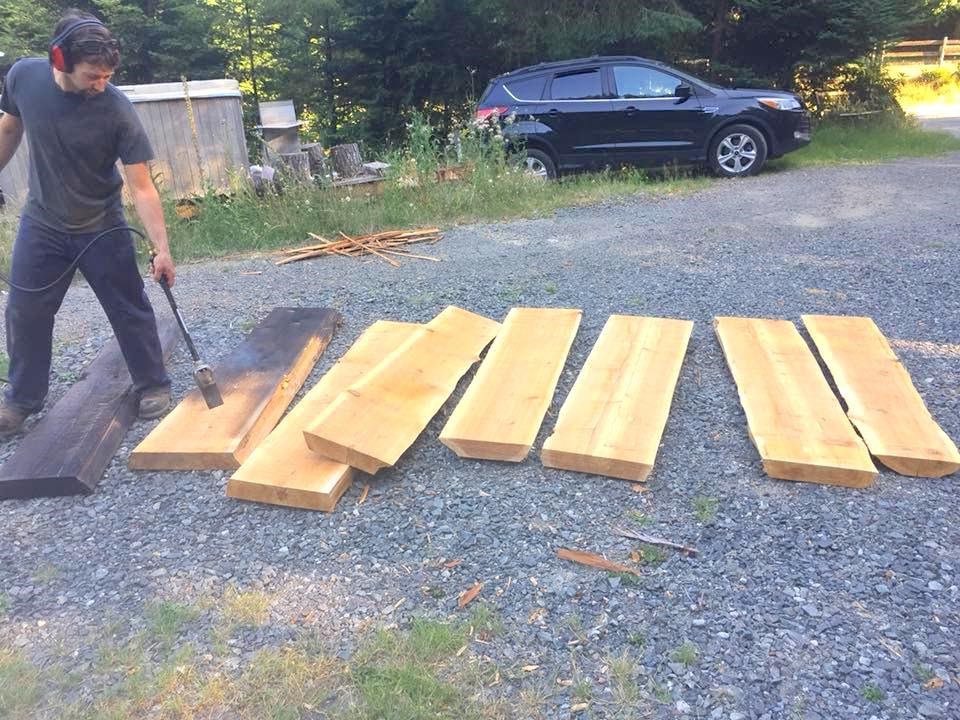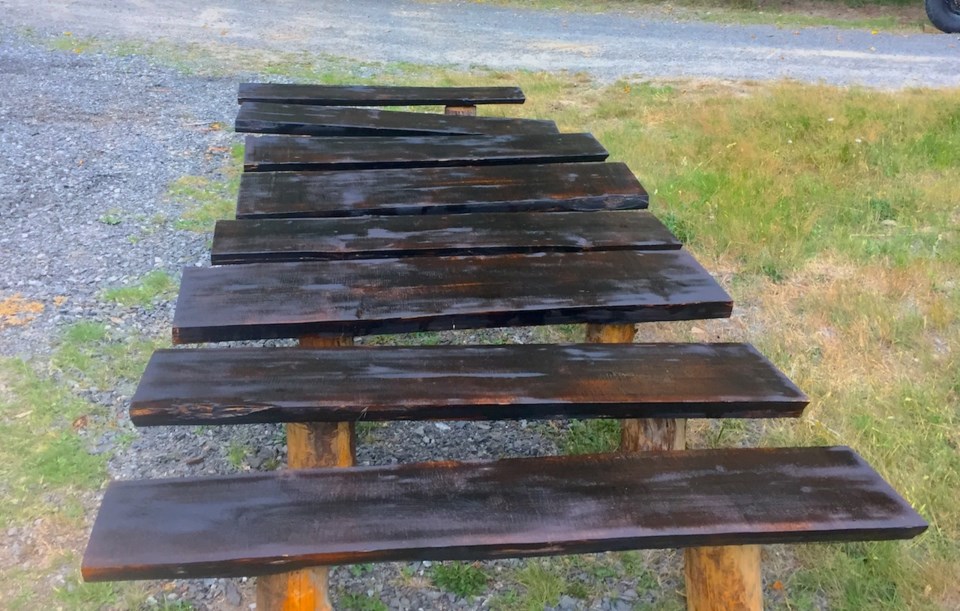Before the new bridge is installed across the Handloggers trail on Mt. Gardner, it’s being burnt – on purpose.
Members of the Bowen Trail Riders Association, one of three organizations in the Bowen Trails Coalition dedicated to improving local trails, are busy constructing the badly needed bridge.
Since the bridge crosses a creek, BTRA wasn’t allowed to use pressurized wood, which could leech chemicals in to the stream. Instead the province (the bridge is on Crown land) asked the bridge builders to use cedar wood, which could stand up to water and rot. But BTRA decided to do them one better.
BTRA researched a Japanese wood preservation technique called shou sugi ban (also known as yakisugi which translates roughly to ‘‘burned cedar board.’’) It involves charring the wood, brushing it off, washing it and then sealing it with oil (in the case of these bridge slats – linseed oil). The process of burning the cedar surface seals its susceptible core in a weather-proof, fire-proof, bug-resistant, non-toxic charcoal-coloured carbonized veneer.

Shou sugi ban has risen in popularity in North America as an alternative finish for house siding and fences (the New York Times wrote about the trend in 2017) and has been similarly used in Japan since at least the 1700s. In those cases, if done properly, the treatment can make the wood last for more than 80 years, though that’s likely not the case for a trail bridge which has all manner of motorized and non-motorized users.
In July, BTRA president and Handloggers Trail bridge project manager Kevan Bernards, with some help, used the shou sugi ban technique on the stringers, decking and lumber for the new bridge.
“We ran it through the province and they approved it,” says Bernards.
“It creates a beautiful finish and (in my opinion) is preferable to aluminum or other alternatives to pressure treated which might look out of place on Bowen’s trails,” says Bernards.
The bridge project has been a summer-long endeavour. BTRA, its partner, Bowen Island Trail Society, and other locals have put more than 70 volunteer hours into the bridge and Bernards says they’re nearly halfway done.
“The next big step is to co-ordinate the machine work, getting the material to the site, placing the stringers and decking,” says Bernards.
The group is hoping to get the project done in time for the Handloggers Marathon over the Labour Day weekend.
To follow bridge progress or to find out how to get involved with BTRA, they’re on Facebook @BowenTrailRidersAssociation.



